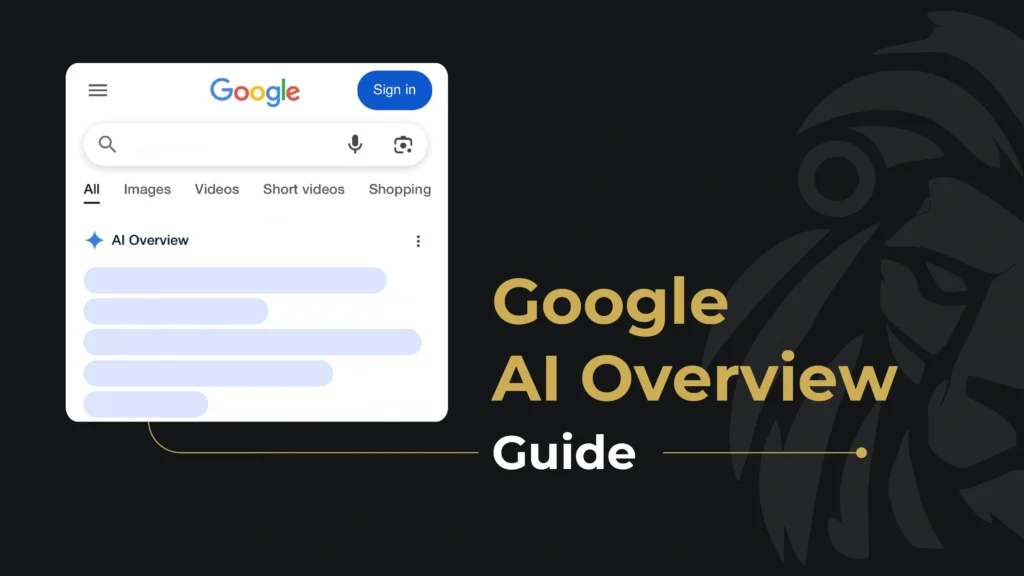Google AI Overviews, formerly known as the Search Generative Experience (SGE), are concise, AI-generated summaries prominently featured at the top of Google search results. These summaries aim to address user queries quickly by sourcing authoritative, well-structured content from across the web.
AI overviews and SEO present both challenges and opportunities for SEOs and content creators. The introduction of Google AI has shifted traditional SEO dynamics significantly. SEOs must now consider how to effectively appear within these summaries, making “SEO AI overviews” a critical consideration for strategy.
Mastering SEO and Google AI means focusing on clarity, authority, and structured formatting. By understanding AI SEO basics, marketers can boost visibility and relevance in these summaries.To strengthen your optimisation, explore our guide on On-Page SEO: Tips, Techniques, and Best Practices, which will help you align content with both AI-driven summaries and traditional search results. This guide provides a comprehensive SEO overview of AI, equipping you to optimise effectively and adapt swiftly to Google’s evolving generative search landscape.
Key Takeaways
- AI Overviews are not standard search results: They’re AI-generated summaries placed above organic listings, designed to answer queries quickly.
- Ranking on page one doesn’t guarantee inclusion: Google selects content based on clarity, authority, and structure, not just position.
- Overview formats vary by intent: From definitions and comparisons to how-to guides and local results, aligning with intent improves inclusion chances.
- Structure and simplicity matter: Use question-based headings, bullet points, and concise paragraphs to make your content LLM-friendly.
- Authority and trust win: Cite reputable sources, include author bios, and publish deeply informative content to build topical authority.
- Use schema markup: Implement FAQ, HowTo, and Article schema to help Google interpret your content correctly.
- Track your visibility: Monitor AI Overview presence using SEMrush or manual checks; GSC support is expanding.
- Being quoted in overviews matters: Quote links offer strong brand visibility, even if they don’t drive high click volumes.
- AI-first SEO is about serving users: Focus on quality, intent alignment, and usability to thrive in Google’s evolving search experience.
What Are Google AI Overviews?
Google AI Overviews are concise, informative summaries generated by Google’s advanced language models, such as Gemini. They’re designed to quickly answer complex or detailed user queries right at the top of the search results page. Essentially, Google’s AI pulls together relevant information from several credible, authoritative web pages and condenses it into a single clear, structured answer.
So, what’s the practical definition of a Google AI Overview from an SEO standpoint? It’s a new type of featured content that’s reshaping the search experience, appearing prominently above traditional organic results. If you’ve recently searched for something detailed or comparative, you’ve probably seen these overviews in action.
To optimise for Google’s generative search (often called Google SGE in SEO communities), your content needs clarity, credibility, and precision. High-quality, clearly structured, authoritative information stands the best chance of being featured prominently in Google’s AI Overviews.
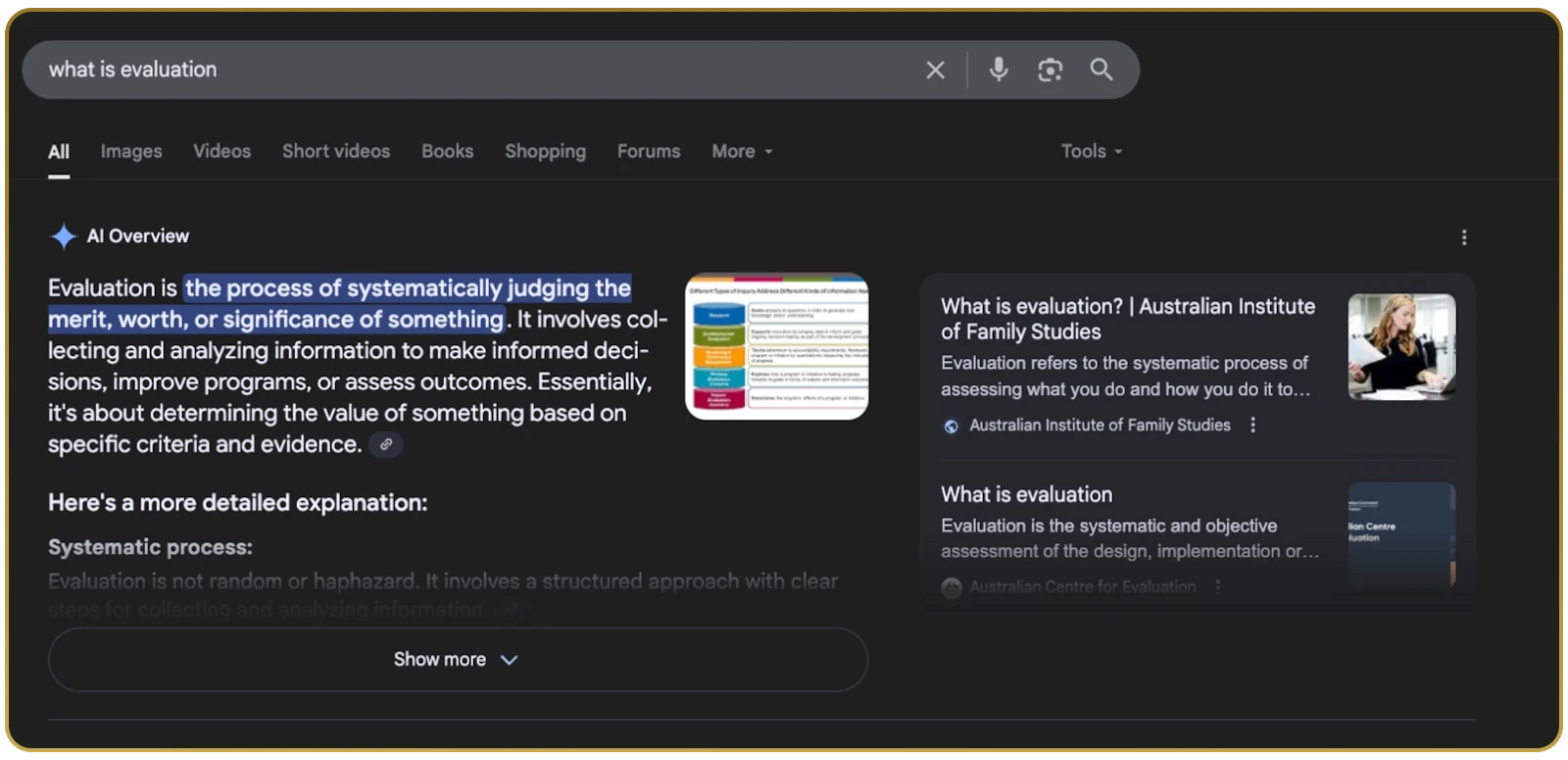
How Do AI Overviews Affect SEO?
The impact of AI Overviews on SEO is substantial, reshaping how businesses approach content strategy.
One significant effect is the lower click-through rate (CTR) for traditional organic listings, as Google’s AI often delivers answers directly on the results page. This SEO change, driven by AI Overviews, means fewer clicks despite visibility.
Another major shift is toward authority-driven visibility. Google selects content for these overviews based on credibility, relevance, and semantic depth. Therefore, the SEO performance in AI Overviews strongly favours authoritative, well-structured content.
Moreover, ranking first in traditional search results becomes less crucial. Instead, appearing in Google’s AI-generated summary box provides superior brand exposure and credibility, amplifying the overall SEO impact of Google AI search. Businesses cited within these overviews benefit from enhanced brand trust and user recognition.
To succeed in this evolving landscape, marketers must prioritise content quality, structured formatting, and authoritative sourcing, ensuring they’re optimised specifically for visibility in Google’s new AI-driven search ecosystem.
Types of AI Overviews: Vary by Search Intent
Google’s AI Overviews aren’t all the same. They dynamically adjust based on the search intent behind each query. Understanding the different types of AI Overviews and formats can significantly boost your visibility and help tailor your content effectively.
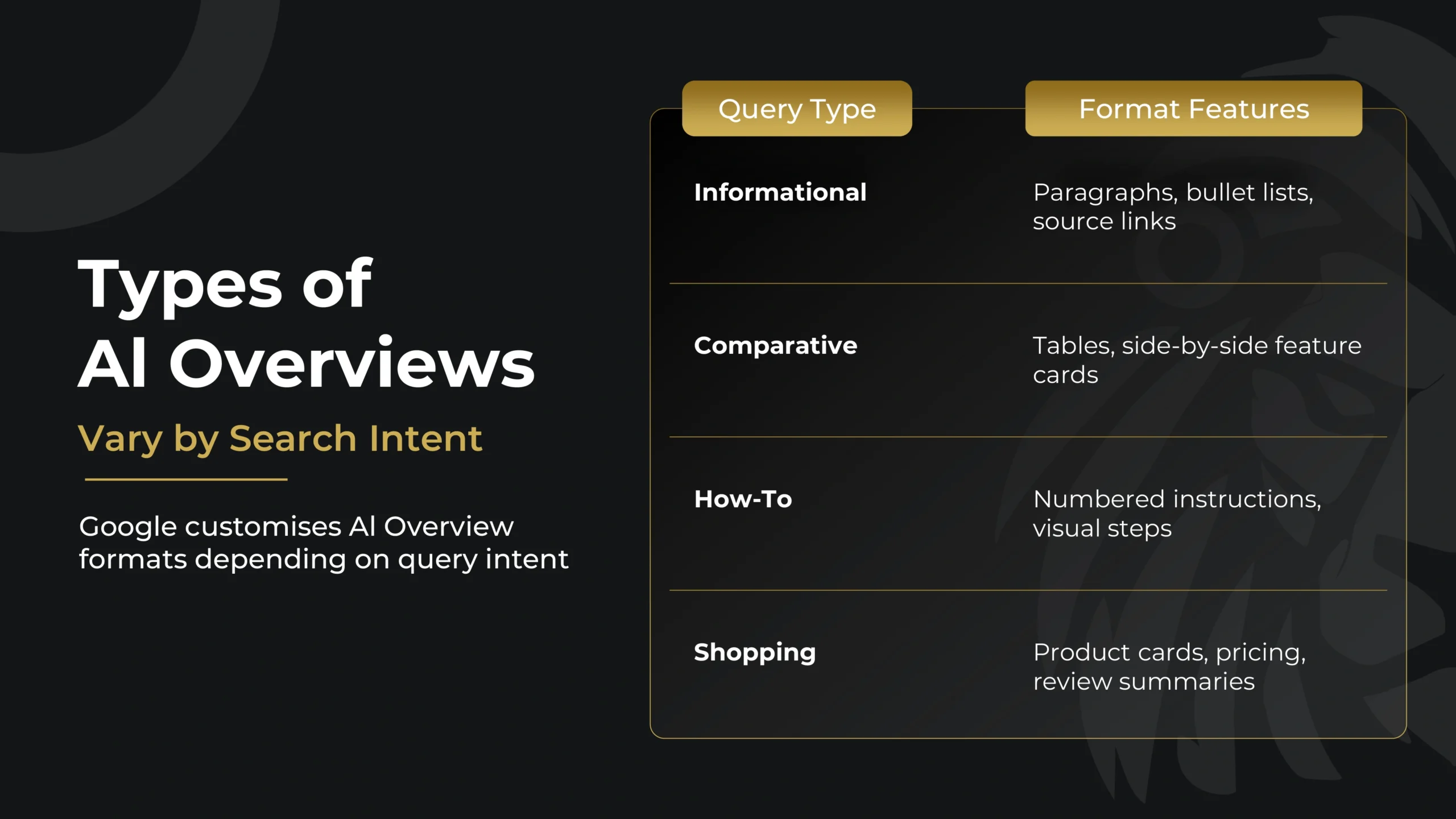
Here are the main types of AI Overviews, explained clearly with examples:
1 – Informational Queries:
-
-
- Provide concise explanations and summaries.
- Typically presented in short paragraphs or bullet points.
- Example: “What is evolution?”
-
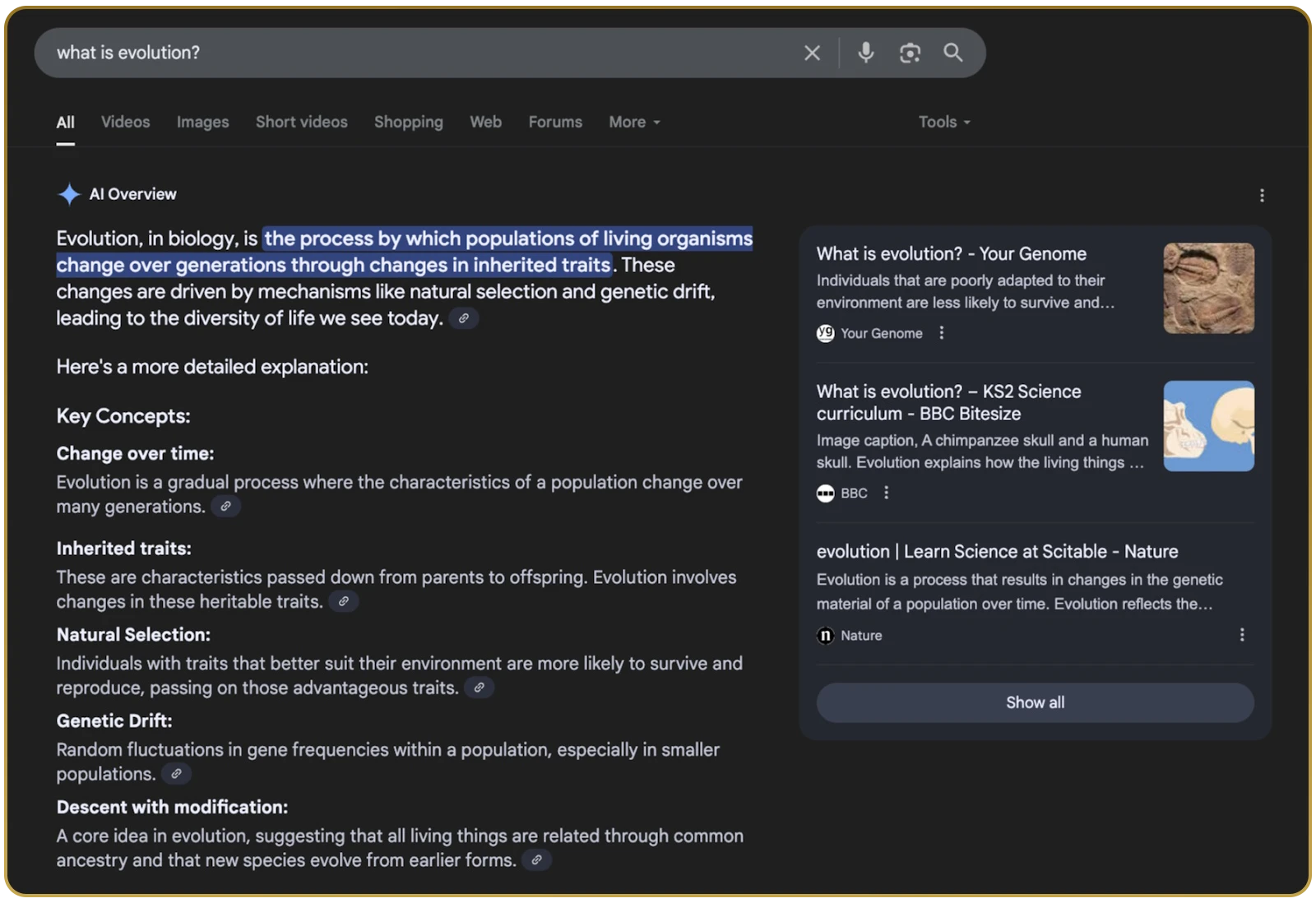
2 – Comparative Queries:
-
- Structured in formats like side-by-side comparisons, tables, or lists.
- Highlight key differences clearly.
- Example: “iPhone vs Samsung Galaxy”.
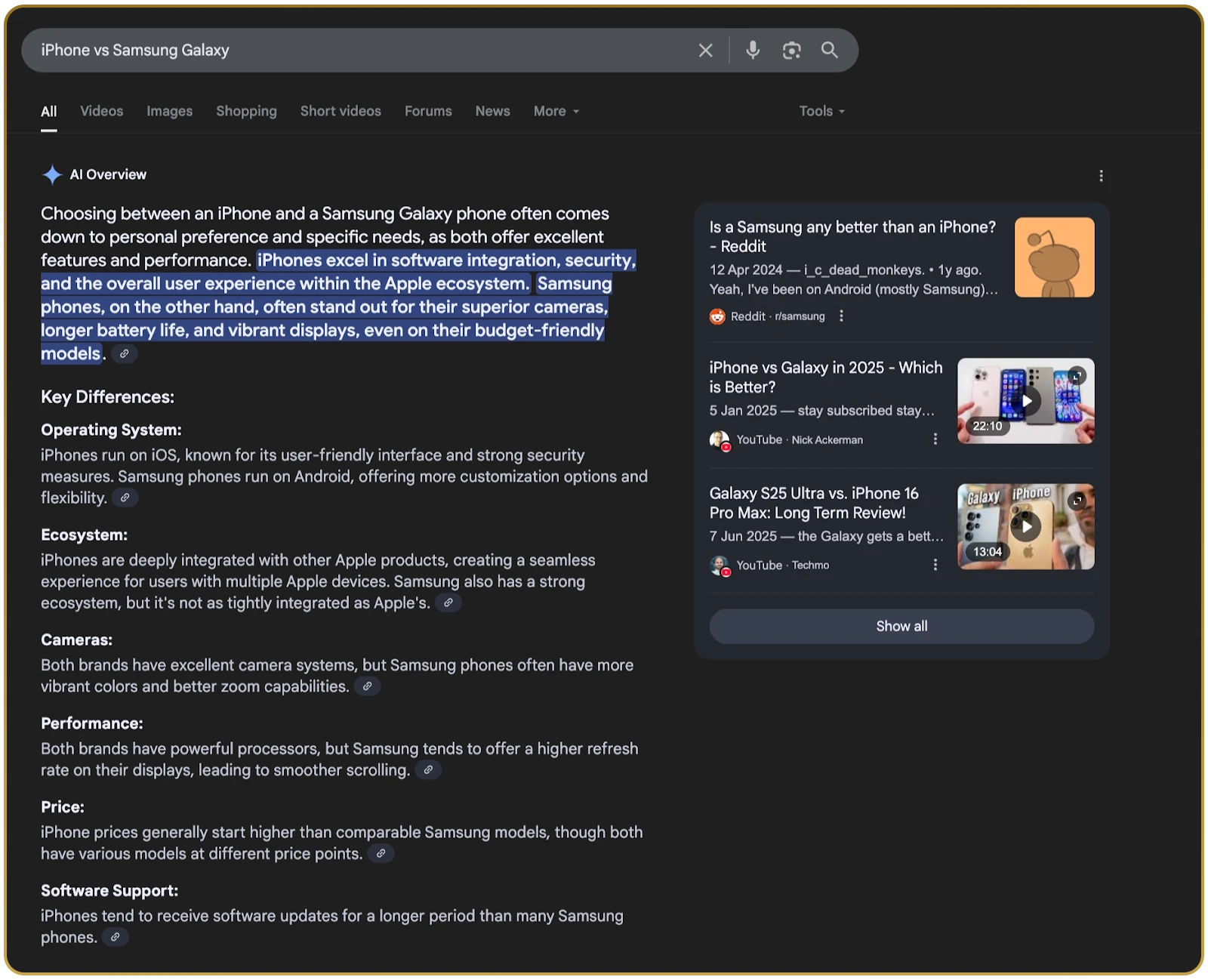
3 – Task-Oriented Queries (How-To):
-
- Step-by-step instructions, usually numbered or in bullet lists.
- Often include visual aids or links to instructional videos.
- Example: “How to make bread?”
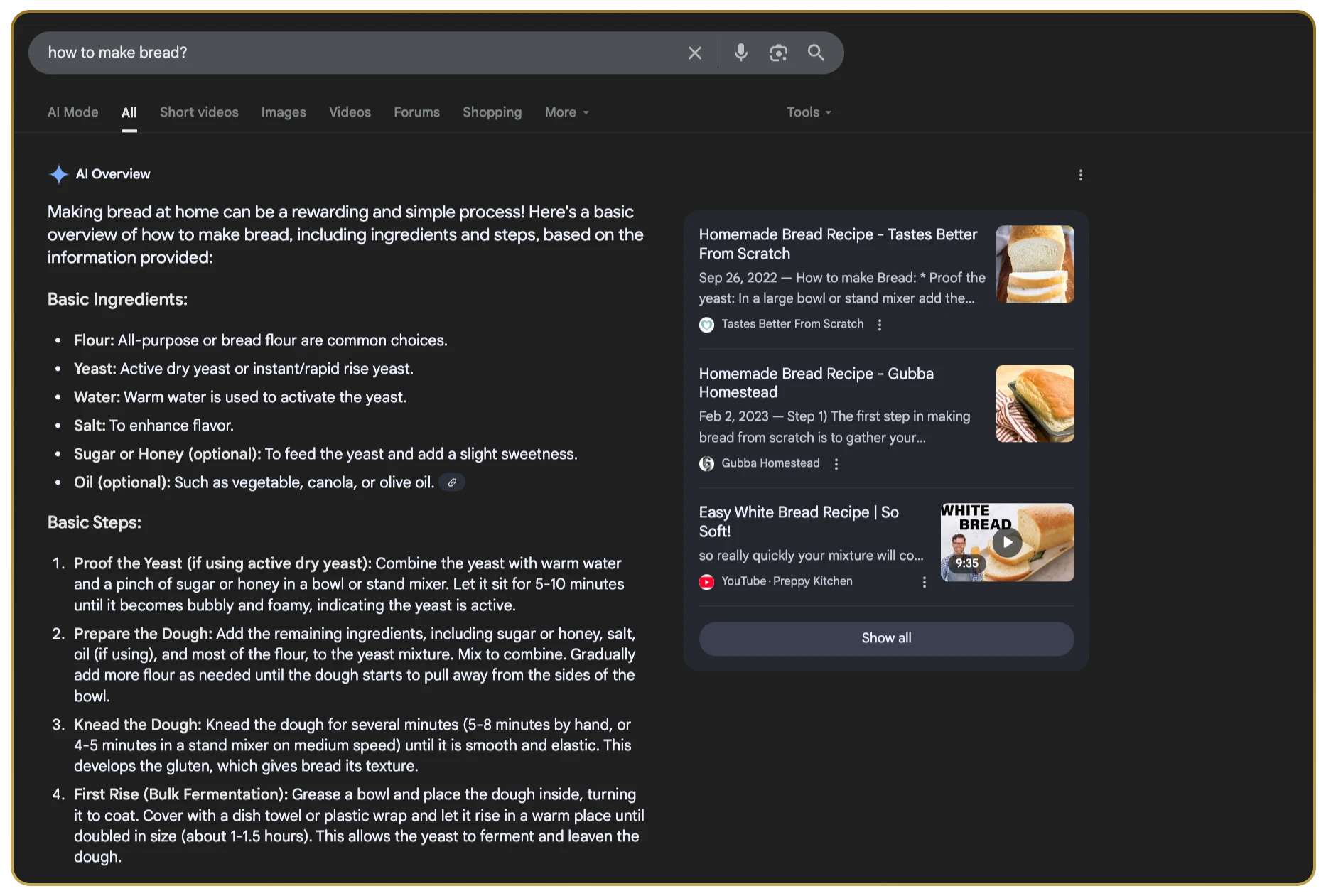
4 – Shopping or Transactional Queries:
-
- Feature product cards with images, pricing, availability, and quick links to sellers.
- Assist quick purchase decisions.
- Example: “best gaming monitor to buy.”
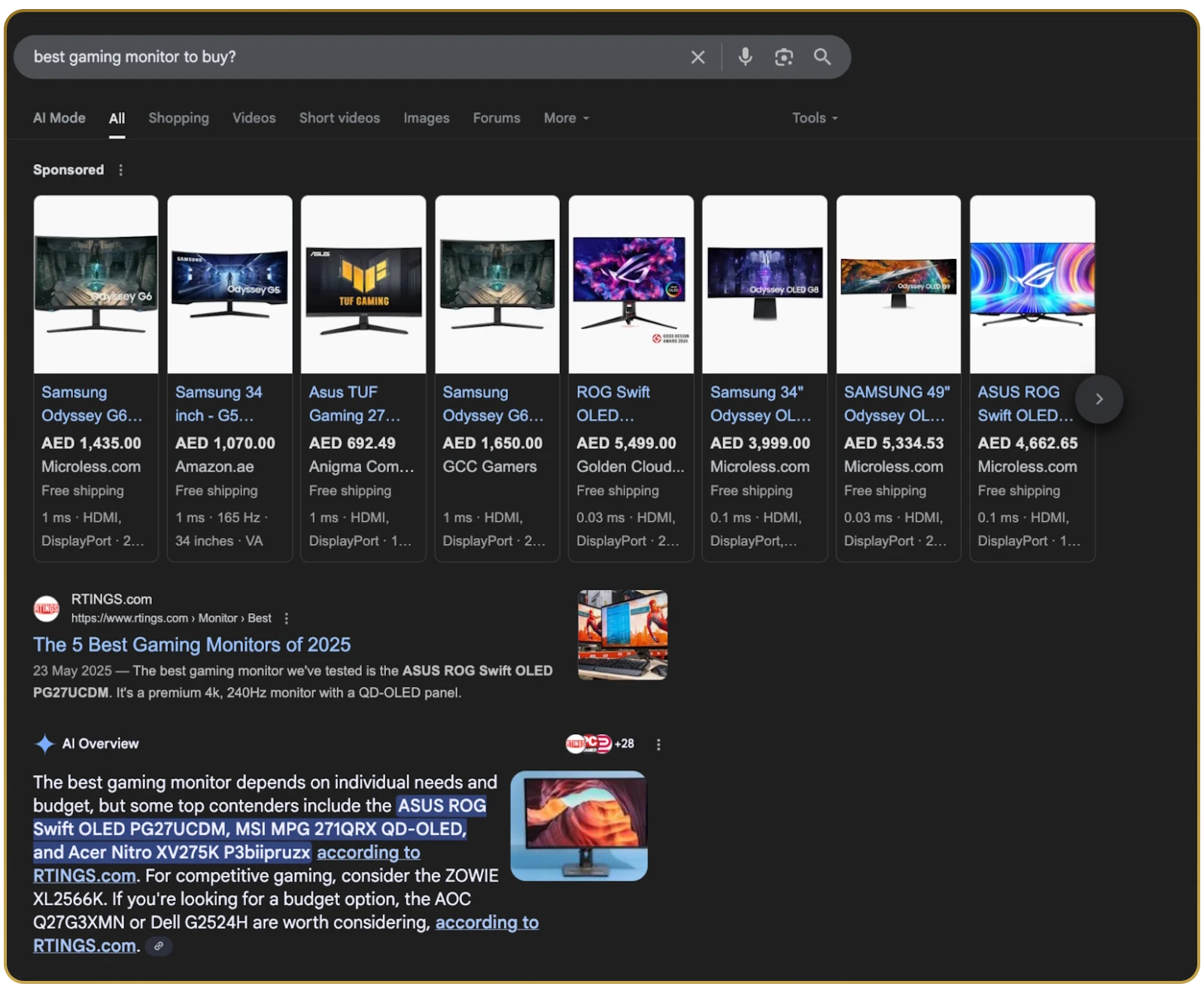
Clearly understanding these AI overview types and formats will help you align your content precisely with user search intent, significantly increasing your chances of visibility in Google’s prominent AI placements.
Understanding Quote Links in Google AI Overviews
Quote links are clickable citations that appear within Google’s AI Overviews. These links reference the web pages Google used to generate its summary, offering users a way to explore the original source of information. Typically, Google displays them as small cards, either inline within the overview or listed at the bottom, featuring the website name and a snippet of text.
How Google Selects Quote Links
Google doesn’t simply pull links from the top-ranking search results. Instead, it chooses sources based on how clearly and directly they answer the user’s query. Pages that feature structured content, well-defined headings, and factual clarity are more likely to be cited. Relevance to the specific part of the overview also plays a major role even if a page isn’t ranking number one.
Do Quote Links Drive Traffic?
Yes, but usually in lower volumes than traditional organic results. Because AI Overviews aim to reduce friction for users, many may find their answer without clicking through. However, quote links offer strong brand exposure and perceived authority. Being featured as a cited source in an AI Overview not only builds trust with users but can also increase return visits and long-term visibility.
How to Optimise Your Content For AI Overviews
Optimising your content specifically for AI overviews is essential to staying competitive in the evolving SEO landscape.
Here’s how to optimise content for Google AI Overviews effectively:
Answer Specific Questions Clearly
Google AI Overviews favour concise and direct answers. Use clear, question-based headings and deliver your primary answer within the first 100–200 words. This structured approach makes your content easy for Google’s AI to identify, increasing its likelihood of selection in featured summaries.
Structured Formatting
Content structure plays a crucial role in AI SEO. Optimise content for AI SEO by breaking down information into clear bullet points, tables, numbered lists, or concise paragraphs. This formatting allows Google’s language models (LLMs) to easily parse and summarise your content accurately.
Semantic and Topical SEO
When optimising content for AI overviews, depth matters. Thoroughly cover your chosen topic using LSI keywords and related entities to strengthen topical depth. This approach helps Google recognise your content’s topical authority, making your site a trusted source for generating accurate and relevant AI summaries.
E-E-A-T Best Practices
Expertise, Experience, Authoritativeness, and Trustworthiness (E-E-A-T) remain essential for SEO writing and AI overviews. Enhance your credibility by clearly highlighting author bios, showcasing professional expertise, citing authoritative sources, and linking externally to reputable domains.
Add Original Media
Including unique charts, visuals, or original insights can set your content apart. Media-rich content naturally attracts Google’s LLMs by providing additional context and clarity, positioning your pages as preferred sources for generating informative AI overviews.
Applying these AI content best practices ensures your content is optimised, authoritative, and highly attractive for inclusion in Google’s generative search results.
How to Optimise Your Technical SEO for AI Overviews
Strong technical foundations are key to increasing your chances of being featured in Google AI Overviews. Below are essential strategies to ensure your website is technically optimised for AI-driven search:
Use Structured Data
Structured data helps Google better understand your content. Implementing schema markup such as FAQ, HowTo, and Article schema can significantly improve how your content is interpreted and displayed in AI overviews. Using structured data in AI SEO not only supports better indexing but also increases the likelihood of being used in summarised formats.
Improve UX and Speed
User experience is directly tied to how Google ranks and selects content. Make sure your site performs well on Core Web Vitals – especially mobile responsiveness, loading speed, and layout stability. Technical SEO for AI overviews depends on a seamless user journey, so a slow or clunky website could cost you valuable visibility. For guidance, check out our Practical Tips to Build a User-Friendly Website to ensure your site meets both user and search engine expectations.
Clean Architecture
Google’s AI favours content that is easy to crawl and understand. That means clean HTML, well-structured heading hierarchies (H1, H2, H3), and keyword-rich but user-friendly URLs. Schema SEO for Google AI also benefits from logical site structure, internal linking, and consistent metadata across pages.
Final Note
Technical optimisation in AI SEO is not just about ticking boxes, it’s about creating a site environment that makes your high-quality content easier to discover, interpret, and elevate in Google’s AI-driven results.
How to Track AI Overview Visibility
As AI Overviews become a more prominent part of Google Search, it’s crucial to monitor how often and where your content is being featured. Here’s how to track AI Overview performance effectively:
Use Dedicated Tools
Platforms like SEMrush offer features specifically built to track AI Overview rankings. These tools help identify which queries trigger overviews and whether your content appears within them.
Manual SERP Checks
In addition to automated tools, manually searching your key queries in incognito mode allows you to spot when and how your content is cited in AI summaries. It’s a helpful way to understand presentation and competitors’ positioning.
Leverage Google Search Console
As of June 2025, Google began rolling out AI Overview traffic data in the U.S. This update allows you to see how AI-generated results are affecting your traffic. Keep an eye on the “AI Overview” filter as it expands globally.
Monitor and Adjust Regularly
Use these insights to refine your content structure, depth, and technical quality. AI SEO performance tracking should be an ongoing process as Google’s generative search features continue to evolve.
How Google Selects Content for AI Overviews
Understanding how Google selects content for AI Overviews is essential if you want to be featured. Based on Google’s official SGE documentation, here are the key selection factors explained:
High-Quality and Trustworthy Content
Google prioritises content that demonstrates expertise, factual accuracy, and trustworthiness. Sites that follow E-E-A-T principles are more likely to be chosen. This is a foundational part of Google’s AI content criteria. For transactional or product-based queries, e-commerce SEO plays a critical role in helping your product pages become eligible for AI summary inclusion.
Clear Structure and Intent Alignment
Pages with strong structure; clear headings, concise sections, and direct answers are easier for Google’s AI to summarise. Equally important is ensuring your content matches the search intent behind a query.
Authority and Relevance
Google tends to pull content from domains that already have topical authority. If your site consistently publishes content on a specific subject, it becomes a stronger candidate for AI overview source selection.
No Opt-Out Option
Unlike some features, publishers cannot opt out of AI Overviews. If your content is indexable and meets quality signals, it can be included automatically in Google AI search ranking.
Google positions SGE as a way to support not replace web publishers by driving valuable traffic to high-quality content.

Conclusion
To thrive in the age of AI-powered search, your SEO strategy needs a forward-thinking approach. Here’s what that looks like in practice:
Structured
Organise content with clear headings, bullet points, and formatting that allows Google’s AI to easily interpret and summarise it.
Authoritative
Build trust by demonstrating subject matter expertise, citing reliable sources, and focusing on content accuracy.
User-First
Prioritise helpful, relevant, and intent-driven content that genuinely answers what users are searching for.
Technically Sound
Ensure your site meets performance standards, implements structured data, and is mobile-friendly.
The future of SEO with AI isn’t about gaming the system, it’s about creating content that genuinely helps users and is easy for machines to interpret. If you’re looking to elevate your online presence with a tailored SEO service in Dubai, we’re here to help you stay ahead in this evolving digital landscape.
